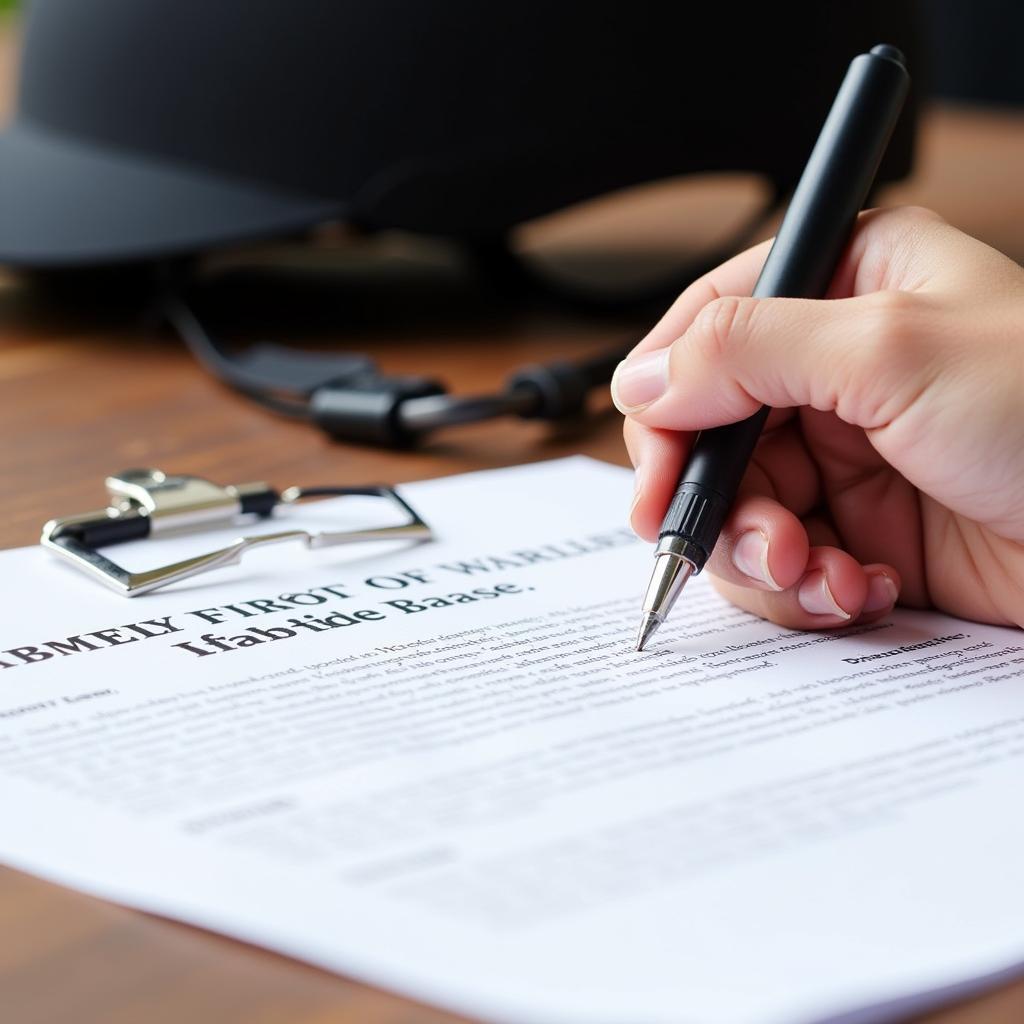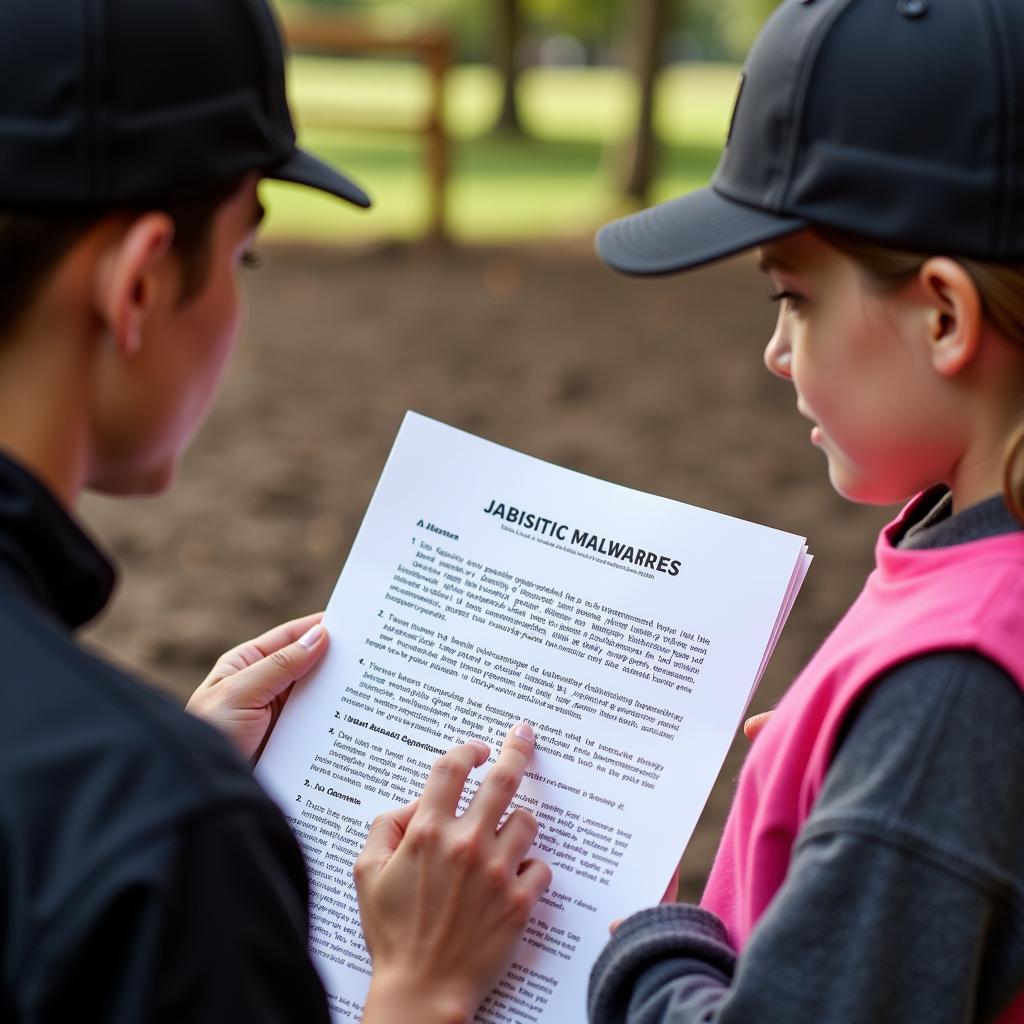Navigating the world of horses often involves inherent risks. A Horse Liability Waiver Form stands as a crucial document, serving to protect equine professionals from potential lawsuits. Whether you’re a seasoned rider or a beginner, understanding the significance of a horse liability waiver form is essential for everyone stepping onto an equestrian property.
What is a Horse Liability Waiver Form?
In essence, a horse liability waiver form is a legal document that releases a specific individual or entity from liability in the event of an injury occurring on their property or during an equine-related activity. This agreement acknowledges the inherent risks associated with horses and affirms that the participant assumes these risks voluntarily.
Why are Horse Liability Waiver Forms Important?
The unpredictable nature of horses makes liability waivers an important tool for equine businesses and professionals. These forms provide several key benefits:
- Protection from Lawsuits: A primary function of the waiver is to safeguard equine professionals against lawsuits arising from riding accidents or incidents involving horses. By having participants acknowledge the risks, it becomes more difficult to hold the stable, instructor, or horse owner liable.
- Transparency and Informed Consent: These waivers ensure participants are fully aware of the potential dangers associated with horses and equine activities. This transparency fosters a culture of safety and responsibility.
- Peace of Mind for All Parties: With a signed waiver in place, both the equine professional and the participant can engage in the activity with greater peace of mind, knowing there’s a documented understanding of the risks involved.
 Signing a Horse Riding Liability Waiver
Signing a Horse Riding Liability Waiver
Key Components of a Horse Liability Waiver Form
A comprehensive horse liability waiver form typically includes the following elements:
- Identification of Parties: The form should clearly identify all parties involved, including the participant, the equine professional, and the horse owner (if applicable).
- Assumption of Risk: This section outlines the inherent risks associated with horses and equestrian activities, emphasizing that the participant understands and accepts these risks.
- Release of Liability: This crucial part states that the participant agrees not to hold the equine professional liable for any injuries or damages resulting from ordinary negligence related to the activity.
- Medical Release: The form should include a section authorizing medical treatment in case of an emergency.
- Parent/Guardian Consent: If the participant is a minor, the waiver must include a section for the parent or legal guardian to sign, giving their consent for the minor’s participation.
Understanding the Limits of Liability Waivers
While horse liability waiver forms offer significant protection, it’s important to note their limitations:
- Gross Negligence: Waivers typically don’t protect against gross negligence or willful misconduct. If an injury occurs due to the equine professional’s reckless or intentional disregard for safety, the waiver may not hold up in court.
- Fraud or Misrepresentation: A waiver signed under duress, through misrepresentation, or without full understanding of its terms may be deemed invalid.
 Discussing an Equestrian Liability Waiver
Discussing an Equestrian Liability Waiver
Best Practices for Using Horse Liability Waiver Forms
To ensure the effectiveness of horse liability waivers, consider the following best practices:
- Use Clear and Concise Language: Avoid legal jargon and ensure the language used is easy to understand for the average person.
- Provide Ample Time for Review: Allow participants sufficient time to read and comprehend the waiver before signing. Answer any questions they may have.
- Keep Records Organized: Maintain organized records of all signed waivers for future reference.
- Consult with an Attorney: It’s advisable to have an attorney review your liability waiver form to ensure it complies with local laws and provides adequate protection.
Horse Liability Waivers: Protecting Your Passion
In the exhilarating yet sometimes unpredictable world of horses, safety remains paramount. Horse liability waiver forms are not about eliminating risk altogether but about fostering a culture of transparency, responsibility, and informed consent.
By understanding the importance of these waivers and following best practices, equine enthusiasts and professionals alike can contribute to a safer and more enjoyable experience for all. Remember, if you have questions or require legal advice regarding horse liability waiver forms, consulting with an attorney specializing in equine law is always recommended.
FAQ about Horse Liability Waiver Forms
1. Do I always need to sign a waiver to ride a horse?
Most reputable stables and riding schools require participants to sign a liability waiver before engaging in any equine activity. This is a standard practice to protect both parties involved.
2. What happens if I don’t understand something in the waiver?
It’s crucial to clarify any doubts or questions you have about the waiver before signing. Ask the equine professional to explain any sections you find unclear or confusing.
3. Can I still sue if I signed a waiver?
While waivers limit liability, they don’t completely eliminate the possibility of a lawsuit. You may still have grounds to sue if you believe the equine professional acted with gross negligence or willful misconduct.
4. Are digital signatures acceptable on horse liability waivers?
Electronic signatures are generally legally binding; however, it’s crucial to ensure the platform used for signing complies with local regulations and provides a secure and verifiable record of the signature.
5. How long should I keep a copy of the signed waiver?
It’s advisable to keep a copy of the signed waiver for at least the statute of limitations for personal injury claims in your state. This period can vary, so consulting with an attorney is recommended.
 Preparing for a Safe Horseback Riding Experience
Preparing for a Safe Horseback Riding Experience
Need help with your equine business? Contact Justus Horses USA today!
Phone: 0772127271
Email: [email protected]
Address: QGM2+WX2, Vị Trung, Vị Thuỷ, Hậu Giang, Việt Nam
Our dedicated team is available 24/7 to assist you.